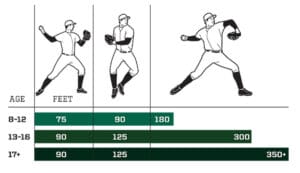Baseball is a game of skill, strategy, and precision. Whether you’re a young player just starting or a parent looking to help your child develop their game, understanding the fundamental skills of baseball is crucial. The three core components—throwing, catching, and batting—are the foundation of success on the field. In this article, we will break down each fundamental skill to help players improve their technique and confidence.
Throwing Fundamentals
Throwing is one of the most critical aspects of baseball, as it impacts both defense and offense. A strong and accurate throw can be the difference between making a great play or allowing the opposition to advance. Therefore, focusing on proper technique is essential for success.
Key Techniques for Throwing:
- Grip: Hold the baseball using a four-seam grip. This means placing your index and middle fingers across the seams while your thumb rests underneath for control. If you have a small hand, you can use three fingers, making sure your thumb is under the baseball for better control.
- Stance: Position your body with your feet shoulder-width apart, knees slightly bent, and weight balanced. This ensures stability before making a throw.
- Arm Motion: Bring your throwing arm back, making sure your elbow is either equal to or higher than your shoulder while stepping forward with your opposite foot. Then, follow through by extending your arm toward your target, ensuring a smooth and accurate throw.
- Follow-Through: A proper follow-through ensures power and accuracy. Your throwing hand should finish near your opposite hip, allowing for a fluid motion.
Drills to Improve Throwing:
- Target Practice: Set up a target and aim for accuracy to develop control.
- Long Toss: Gradually increase the distance of throws to build arm strength over time.
- Quick Release Drills: Work on catching and quickly transferring the ball to your throwing hand to improve reaction time and efficiency.
Catching Fundamentals
Catching is essential for all positions, as it allows players to make plays efficiently and prevent runs. Moreover, good catching skills contribute to overall defensive performance.
Key Techniques for Catching:
- Hand Positioning: Keep your glove open and fingers pointing up for high catches, and fingers pointing down for ground-level catches. Always practice every angle for the best control.
- Footwork: Stay light on your feet and be ready to move in any direction. Quick reactions can make a big difference.
- Tracking the Ball: Keep your eyes on the ball from the moment it leaves the thrower’s hand or bat. This helps in anticipating the catch.
- Soft Hands: Absorb the ball into your glove rather than snatching at it, which helps secure the catch and reduces the risk of errors.
Drills to Improve Catching:
- Wall Ball Drill: Throw a ball against a wall and practice catching the rebounds to enhance reflexes.
- Pop Fly Practice: Have a partner hit or throw pop-ups for fielding practice, ensuring better judgment on high balls.
- Reaction Drills: Use tennis balls to improve hand-eye coordination and reflexes, making quick catches easier.
Batting Fundamentals
Hitting a baseball is one of the most challenging skills in sports, requiring a combination of hand-eye coordination, timing, and power. With proper technique and continuous practice, players can improve their swing significantly.
Key Techniques for Batting:
- Grip: Hold the bat with your hands close together, fingers wrapped around the handle, with your knocking knuckles aligned. This grip provides better control.
- Stance: Stand with your feet shoulder-width apart, knees slightly bent, and weight evenly distributed. A balanced stance helps maintain stability during a swing.
- Swing Mechanics: Load your hands back slightly as the pitcher begins their motion. Step forward with your front foot, rotate your hips, and swing through the ball with controlled power.
- Follow-Through: A complete follow-through ensures you drive the ball effectively, maximizing your hitting potential.
Drills to Improve Batting:
- Tee Work: Hitting off a tee helps focus on mechanics and consistency, allowing players to perfect their swing.
- Soft Toss: Have a coach or teammate gently toss balls for you to hit, helping with hand-eye coordination.
- Live Batting Practice: Simulating real-game pitches helps improve timing and confidence, preparing players for in-game situations.
Conclusion
Mastering the fundamentals of throwing, catching, and batting is essential for any baseball player looking to improve their game. By consistently practicing and using proper techniques, players can develop confidence and refine their skills. Whether you’re a player, parent, or coach, focusing on these basics will set the foundation for success on the field. So, keep practicing, stay patient, and most importantly, enjoy the game of baseball!



